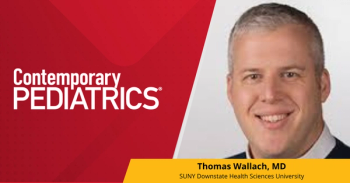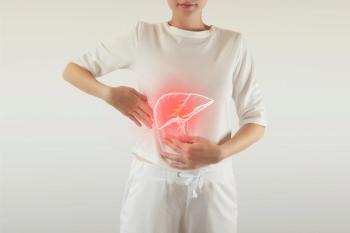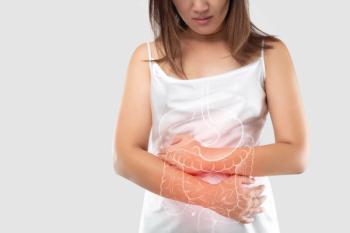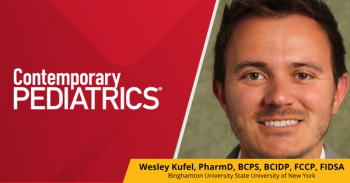
Alternative medicine for atopic dermatitis
Atopic dermatitis (AD) is a common, chronic inflammatory disorder affecting 15% to 30% of pediatric patients.
Atopic dermatitis (AD) is a common, chronic inflammatory disorder affecting 15% to 30% of pediatric patients.1,2 In addition to itching, irritation, and redness of the skin, AD can have a tremendous impact on children, including in social and school situations. Research indicates stress levels in treating and caring for children with AD are greater than when caring for a child with diabetes.3 The mainstay of current treatment is the use of topical steroids and calcineurin inhibitors. However, increasing numbers of patients and parents are turning to complementary and alternative treatments. Why is this so?
What is alternative medicine?
According to the National Institutes of Health (NIH) National Center for Complementary and Alternative Medicine (NCCAM), more than 40% of Americans use some form of complementary or alternative medicine-CAM.4 Although often referred to as a single entity by many, CAM is actually 2 different concepts (Table 1).
In complementary medicine, patients combine traditional, mainstream Western medicine with a nontraditional treatment approach. Nontraditional treatments are a diverse group of practices and can include dietary supplements, herbs, probiotics, homeopathy, traditional Chinese medicine, and mind/body practices such as meditation, acupuncture, and massage therapy. In alternative medicine, patients elect to use a nontraditional approach in lieu of treatment with traditional, mainstream Western medicine.
The complementary approach is much more common with patients using complementary treatments in an adjunctive fashion. However, patients often are very confused. Many patients do not realize that most CAM treatments are not evaluated by the US Food and Drug Administration (FDA) and are misled by statements that seem to be promising but often are void of scientific evidence. Although the NIH and NCCAM have begun funding studies examining CAM practices, it is important for pediatricians to realize that patients continue to consume CAM in large numbers despite a lack of clinical evidence.
Alternative medicine for atopic dermatitis
Use of CAM is increasing for a number of different medical conditions. Estimates for CAM use among asthmatic children average 60%.5 A recent study analyzing data from the 2007 National Health Interview Survey found that nearly 47% of American children used a CAM treatment at some point.6 In terms of AD, individual treatments each scored less than 1%, but these included a variety of therapies such as herbal therapy; vitamins; Ayurveda; naturopathy; homeopathy; traditional healing; diet and vegan-specific diet; and movement techniques (Table 2).
A number of smaller studies indicate a much higher CAM usage rate compared with what NIH and NCCAM report. Nearly 43% (34 of 80) of parents surveyed in 1 study said they gave their children herbal remedies and homeopathic products.7
Reasons parents report for using CAM with AD are varied. While one might think that all parents utilizing CAM are dissatisfied with traditional healthcare, many patients say they tried CAM on the recommendation of someone they trusted. Because there is currently no cure for AD and treatment primarily consists of symptomatic management, many patients with suboptimal control are dissatisfied and looking for a treatment that will work. Dissatisfaction may lead patients down the CAM path.7
Another common reason cited for patients trying CAM is the concern of potential adverse effects of traditional medical treatment for AD. Long-term use of topical steroids can lead to skin atrophy, depigmentation, and telangiectasia. Topical calcineurin inhibitors may lead to skin burning or irritation after topical use. Additionally, many doctors and parents are concerned over FDA warnings of potential cancer risks with calcineurin inhibitor use, and answers to this question are likely years away.7
These reasons drive home the importance of taking a good medication history, especially because many patients may not report CAM use like they do for other types of medication. Additionally, clinicians need to be comfortable educating parents about medication/CAM basics and appropriate use, and discussing any parental concerns.
Alternative therapy is not always helpful
Hon and colleagues report a recent case of an 11-year-old girl in which CAM was potentially harmful.8 The girl had AD that was difficult to control and a previous history of treatment noncompliance. She had tried dietary avoidance and supplements, and was beginning to experience weight loss. Her family decided to bring her to an alternative medicine practitioner, and the patient and family embarked on a trial of cupping and acupuncture. This patient’s treatment was complicated by blistering of the skin and a significant infection.
The literature is peppered with a number of bad outcomes that resulted in adverse effects after treating AD with alternative therapy.7 Treatment with an unidentified herbal therapy for 8 months led to bilateral cataracts in an 11-year-old while a 2-week course of a Chinese herbal medicine led to a severe cardiomyopathy in another patient. Although adverse events are more commonly reported in adults, Lim and colleagues9 examined the type of events impacting pediatricians' patients. They found that infants with restricted intake and children with chronic illness who had stopped their traditional treatments to pursue a CAM treatment were at highest risk for adverse effects. Pediatricians also experienced a number of problems including: poor availability of product information when needed; ingredients of a product not being available; patients not knowing what products they were taking; and products containing multiple ingredients, making it difficult to determine what caused an adverse effect.
Although many patients assume that the term “natural” in the description of a CAM product means “safe,” this is not necessarily so. These CAM products may interact with other CAM products or medications, thereby increasing or decreasing the amount of drug that may be available for treatment. In addition, CAM treatments may interact with anesthesia and make the patient more prone to bleeding during surgery.9
Results for CAM are not generalizable
Personal stories about CAM, especially testimonials on the Internet, can be very compelling to parents, but these testimonials are not the same as evidence. Clinical efficacy and general studies utilizing CAM are lacking for children, much less targeted to AD. Not surprisingly, there also is little in the literature describing how different therapies affect children of different ages. Given that children are not little adults, it is potentially dangerous to extrapolate results of adult studies back to children because their bodies may respond differently to treatments.
Lack of regulation presents a similar barrier.7 Whereas one can be reasonably certain of the efficacy of generic antibiotics or other medications commonly used in clinical practice, concern is warranted about the active ingredients in natural products.
CAM treatments for AD
A list of CAM treatments related to AD certainly is not exhaustive, as a brief Internet search will demonstrate. The following discussion will focus on a number of practices that parents have asked about or utilize, but not on restrictive diets or on patients who have a coexisting food allergy where these diets have demonstrated the most benefit.
PROBIOTICS OR VITAMINS
Is dirty better? While parents may cringe when their kids come in sweaty and dirty from a hard day at play, the hygiene hypothesis posits that increasing rates of atopy are due to humans’ extreme cleanliness. Lack of exposure leads to fewer challenges to children’s immune systems, and atopic diseases result. Specifically, changes in intestinal colonization are thought to affect how a child’s immune system learns.7,10
Much of the interest surrounds both probiotics (live microorganisms such as Lactobacillus and Bifidobacteria that are part of normal health gut flora in an infant) and prebiotics (the nondigestible sugars that promote growth of bacteria in the gut). Kalliomäki and colleagues treated mothers and infants (mothers were treated prenatally and infants were treated until 6 months of age) with Lactobacillus rhamnosus and noted that AD was 2 times greater in the nontreated infants.10 The benefit was maintained through 4 years of age, and follow-up studies by the same group demonstrated a reduction in AD until at least age 7 years.10,11
However, multiple other studies have not demonstrated a similar effect. A 2007 Cochrane Review12 on probiotics found insufficient evidence while a 2013 review of prebiotics concluded that there was “some evidence that a prebiotic supplement added to infant feeds may prevent eczema.13 The researchers indicated that further study was needed and that it was unclear if prebiotics may benefit all infants or only those at high risk.
Vitamin D is also thought to play a role in AD through its immunomodulatory properties. Vitamin D deficiency is a potential environmental factor involved in increases in atopic disease and high immunoglobulin E levels.14 Mothers with higher intakes of vitamin D have less AD in their children, and patients supplemented with vitamin D have demonstrated significant improvements in AD symptoms.15
In addition, B12 has been examined in multiple allergic diseases. German scientists studied the vitamin’s use in AD because of its ability to inactivate nitric oxide, one of the potential pathophysiologic mechanisms in AD. In a randomized trial, topical vitamin B12 versus placebo for AD was examined using a side-by-side comparison study. Topical B12 reduced severity of AD, but skin reactions, including AD flares, were an adverse effect.7
EVENING PRIMROSE AND BORAGE OIL
Evening primrose oil (EPO; gamma-linolenic acid) is thought to benefit AD because of its high content of linolenic acid and omega-6 fatty acids and the abnormality of fatty acid metabolism noted in AD.7 Borage oil (BO), which contains essential fatty acids, has been commonly studied in AD. Both EPO and BO are thought to provide benefit because they possess anti-inflammatory properties. Studies evaluating EPO and BO have demonstrated mixed results, and their use in the treatment of AD remains controversial.
A 2013 Cochrane Review concluded EPO and BO lacked clinical effect in AD because placebo had a similar effect. Importantly, there is potential concern for inflammation, thrombosis, and immunosuppression when taking EPO for a long period of time.16 Additionally, there is a potential risk of drug interaction and bleeding for patients on anticoagulants.
ST. JOHN'S WORT
Hyperforin is the major component of St. John’s wort, and it contains anti-inflammatory and antibacterial properties. An herbal extract of hyperforin was compared with an emollient vehicle in a side-by-side comparison.7 Hyperforin treatment was associated with decreased intensity of AD and there were no significant adverse effects. However, there was no comparison to current standard of care.
TRADITIONAL CHINESE MEDICINE
Traditional Chinese medicine (TCM) utilizes herbal medicine as well as mind-body practices to prevent and treat AD. In TCM, AD is thought to result from imbalances, and therefore practitioners treat the patient’s complaints and symptom patterns rather than the underlying cause. Treatment often consists of a combination of herbs, minerals, and plant extracts.7
According to a 2013 Cochrane review,17 Chinese herbal medicine taken orally or through a topical cream did not improve AD outcomes. Whereas some of the 28 studies reviewed had positive results, more than half the studies failed to use validated scoring systems for clinical improvement and the treatments often were compared with placebo only. Additionally, methodological flaws prevented the Cochrane reviewers from recommending these treatments because they did not believe the claims could be regarded as reliable.
Although there have been concerns about liver and renal damage with TCM since the early 1990s,18 only 1 of the more than 2300 patients in the Cochrane review had a severe adverse event related to worsening liver function. Minor events appeared to occur as frequently in the comparator groups as in the TCM group.
PSYCHOLOGICAL OR EDUCATIONAL INTERVENTIONS
In a very large study of 992 children, 6 standardized educational sessions led by either a dermatologist or a nurse resulted in improvements in disease severity as well as in quality of life.19 Similar results have been seen in multiple smaller studies.7
Psychological stress also has been noted to stimulate immune responses such as mast cell activation and release of inflammatory mediators. Patients with AD may have a hyperacute stress response with overactivation of T-cells and mast cells.20 Although these patients may have a good response to serotonin reuptake inhibitors, treatments such as individual behavioral therapy, stress management, and cognitive behavioral therapy demonstrated decreased severity and decreased itch intensity. However, lack of detail in many of these studies would not allow for replication of interventions, making it difficult to recommend specific practices based on current research.19,21
Conclusion
Patients with AD are increasingly turning to complementary and alternative practices because of concerns related to adverse effects of traditional medicine, lack of response, or a desire for more “natural” therapy. Whatever the reason, pediatricians need to be educated about CAM and these treatments’ potential adverse effects, benefits, and limitations. Despite a number of individual studies demonstrating benefit, the overall benefit and efficacy of CAM for AD is yet to be determined.
REFERENCES
1. Bieber T. Atopic dermatitis. N Engl J Med. 2008;358(14):1483-1494.
2. Tan HY, Zhang AL, Chen D, Xue CC, Lenon GB. Chinese herbal medicine for atopic dermatitis: a systematic review. J Am Acad Dermatol. 2013;69(2):295-304.
3. Kemp AS. Atopic eczema: its social and financial costs. J Paediatr Child Health. 1999;35(3):229-231.
4. National Institutes of Health. National Center for Complementary and Alternative Medicine (NCCAM). Complementary, alternative, or integrative health: What’s in a name? Available at:
5. Slader CA, Reddel HK, Jenkins CR, Armour CL, Bosnic-Anticevich SZ. Complementary and alternative medicine use in asthma: who is using what? Respirology. 2006;11(4):373-387.
6. Silverberg JI, Lee-Wong M, Silverberg NB. Complementary and alternative medicines and childhood eczema: a US population-based study. Dermatitis. 2014;25(5):246-254.
7. Lee J, Bielory L. Complementary and alternative interventions in atopic dermatitis. Immunol Allergy Clin North Am. 2010;30(3):411-424.
8. Hon KL, Luk DC, Leong KF, Leung AK. Cupping therapy may be harmful for eczema: a PubMed search. Case Rep Pediatr. 2013;2013:605829.
9. Lim A, Cranswick N, South M. Adverse events associated with the use of complementary and alternative medicine in children. Arch Dis Child. 2011;96(3):297-300.
10. Kalliomäki M, Salminen S, Arvilommi H, Kero P, Koskinen P, Isolauri E. Probiotics in primary prevention of atopic disease: a randomised placebo-controlled trial. Lancet. 2001;357(9262):1076-1079.
11. Kalliomäki M, Salminen S, Poussa T, Isolauri E. Probiotics during the first 7 years of life: a cumulative risk reduction of eczema in a randomized, placebo-controlled trial. J Allergy Clin Immunol. 2007;119(4):1019-1021.
12. Osborn DA, Sinn JK. Probiotics in infants for prevention of allergic disease and food hypersensitivity. Cochrane Database Syst Rev. 2007;(4):CD006475.
13. Osborn DA, Sinn JK. Prebiotics in infants for prevention of allergy. Cochrane Database Syst Rev. 2013;3:CD006474.
14. Wang SS, Hon KL, Kong AP, Pong HN, Wong GW, Leung TF. Vitamin D deficiency is associated with diagnosis and severity of childhood atopic dermatitis. Pediatr Allergy Immunol. 2014;25(1):30-35.
15. Samochocki Z, Bogaczewicz J, Jeziorkowska R, et al. Vitamin D effects in atopic dermatitis. J Am Acad Dermatol. 2013;69(2):238-244.
16. Bamford JT, Ray S, Musekiwa A, van Gool C, Humphreys R, Ernst E. Oral evening primrose oil and borage oil for eczema. Cochrane Database Syst Rev. 2013;4:CD004416.
17. Gu S, Yang AW, Xue CC, et al. Chinese herbal medicine for atopic eczema. Cochrane Database Syst Rev. 2013;9:CD008642.
18. Perharic L, Shaw D, Leon C, De Smet PA, Murray VS. Possible association of liver damage with the use of Chinese herbal medicine for skin disease. Vet Hum Toxicol. 1995;37(6):562-566.
19. Ersser SJ, Cowdell F, Latter S, et al. Psychological and educational interventions for atopic eczema in children. Cochrane Database Syst Rev. 2014;1:CD004054.
20. Suárez AL, Feramisco JD, Koo J, Steinhoff M. Psychoneuroimmunology of psychological stress and atopic dermatitis: pathophysiologic and therapeutic updates. Acta Derm Venereol. 2012;92(1):7-15.
21. Ersser SJ, Latter S, Sibley A, Satherley PA, Welbourne S. Psychological and educational interventions for atopic eczema in children. Cochrane Database Syst Rev. 2007;(3):CD004054.
Dr Bass is chief medical information officer and associate professor of medicine and pediatrics, Louisiana State University Health Science Center–Shreveport. The author has nothing to disclose in regard to affiliations with or financial interests in any organizations that may have an interest in any part of this article.
Newsletter
Access practical, evidence-based guidance to support better care for our youngest patients. Join our email list for the latest clinical updates.













